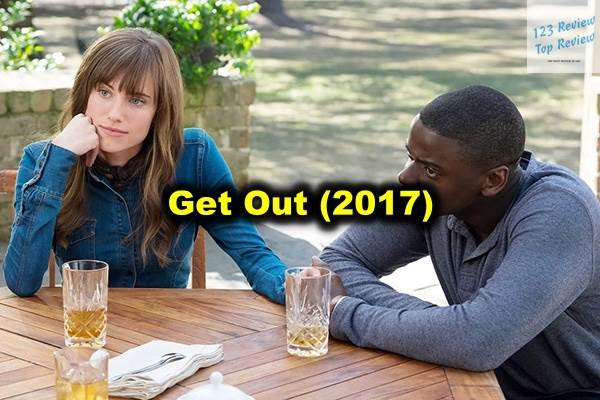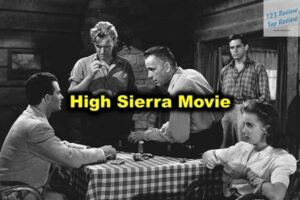“Get Out movie” blends elements of horror, thriller, and social commentary, exploring themes of racism and exploitation.
Overview of Get Out
“Get Out,” released in 2017, stands as a monumental achievement in modern cinema, not just for its commercial success but for its ability to transcend the conventional boundaries of the horror genre. Directed by Jordan Peele, a name previously associated with comedy through his work on “Key & Peele,” the film represents a bold foray into a new realm of storytelling. Peele’s directorial debut is not merely a film; it is a cultural phenomenon that delves deep into the complex, often painful, realities of race relations in contemporary America. By weaving a narrative that is as unsettling as it is thought-provoking, “Get Out” forces its audience to confront the uncomfortable truths that lie beneath the surface of society’s seemingly progressive façade.

Release and Reception
“Get Out” premiered on February 24, 2017, and was met with immediate and widespread acclaim, both critically and commercially. The film quickly became a box office sensation, grossing over $255 million worldwide, an astonishing feat given its modest budget of $4.5 million. Critics and audiences alike praised the film for its innovative blend of horror and social commentary, lauding it as a groundbreaking work that redefined the genre.
The film’s success is reflected not only in its box office numbers but also in the numerous accolades it received. “Get Out” was nominated for four Academy Awards, including Best Picture, Best Director for Peele, Best Actor for Daniel Kaluuya, and Best Original Screenplay, which Peele won. This victory made him the first African-American to win the Academy Award for Best Original Screenplay, marking a historic moment in the film industry.
Director and Key Contributors
Jordan Peele’s transition from comedy to horror with “Get Out” was both unexpected and revolutionary. His work on the film demonstrated a deep understanding of the horror genre, coupled with a sharp insight into the intricacies of social issues, particularly those surrounding race. Peele’s ability to infuse the film with layers of meaning while maintaining the tension and suspense typical of horror is a testament to his talent as a filmmaker.
Peele was supported by a team of talented collaborators who helped bring his vision to life. Toby Oliver, the film’s cinematographer, played a crucial role in creating the film’s eerie and disquieting atmosphere. His use of lighting, framing, and color palettes contributed to the sense of unease that permeates the film. Michael Abels, the composer, provided a haunting score that underscored the film’s themes and heightened the tension. His music, with its blend of African-American spirituals and traditional horror motifs, added a unique layer of emotional resonance to the film.
Themes Explored in Get Out
“Get Out” is a film rich with thematic content, addressing complex and often uncomfortable issues related to race, identity, and societal dynamics. Peele masterfully uses the horror genre to explore these themes, creating a narrative that is both engaging and thought-provoking.
Racism and Microaggressions
At the heart of “Get Out” is an exploration of racism, particularly the more insidious and less overt forms that manifest as microaggressions. The film’s protagonist, Chris Washington, is subjected to a series of subtle, often unintentional slights that reveal the underlying racial prejudices of the people around him. These microaggressions, which range from awkward comments about his physical appearance to fetishizing remarks about Black culture, serve as a precursor to the more overt horrors that unfold as the film progresses.
Peele uses these interactions to highlight the pervasiveness of racism, even in seemingly progressive and well-meaning environments. The Armitage family, who pride themselves on their liberal values, are depicted as being just as complicit in perpetuating racist attitudes as those who are more overtly bigoted. Through this portrayal, “Get Out” critiques the idea that racism is confined to a particular group of people or a specific set of behaviors, instead showing it as a systemic issue that permeates all levels of society.
The Concept of the Other
Another central theme in “Get Out” is the concept of “the Other,” a term used in sociology and cultural studies to describe individuals or groups that are perceived as fundamentally different and, therefore, alien or inferior. In the film, Chris is constantly othered because of his race, a process that is both explicit and implicit in his interactions with the Armitages and their friends.
The film’s depiction of the Armitage family’s sinister intentions towards Chris can be seen as a metaphor for the dehumanizing effects of othering. The Armitages view Chris not as a person but as an object to be exploited for their own benefit. This objectification is emblematic of the broader societal tendency to view marginalized groups through a lens of difference, stripping them of their humanity and reducing them to stereotypes or commodities.
Identity and Cultural Heritage
“Get Out” also delves into the theme of identity and the importance of cultural heritage. Chris, as a Black man in a predominantly white environment, struggles with maintaining his sense of self in the face of external pressures to conform. This struggle is poignantly illustrated in the film’s climactic scenes, where Chris’s survival hinges on his ability to reclaim his identity and assert his autonomy.
The film also touches on the idea of cultural erasure, particularly in the context of Black identity. The Armitages’ attempts to appropriate Black bodies for their own use can be seen as a metaphor for the historical and ongoing erasure of Black culture and the exploitation of Black bodies. Chris’s ultimate victory is not just a physical triumph but a symbolic reclaiming of his identity and heritage, a rejection of the forces that seek to strip him of his humanity.
Cinematic Techniques
Jordan Peele’s directorial prowess is evident in the film’s use of various cinematic techniques that enhance its thematic depth and emotional impact. From symbolism to cinematography to sound design, every aspect of the film contributes to the creation of a tense and unsettling atmosphere that lingers with the audience long after the credits roll.
Use of Symbolism
Symbolism is a key element in “Get Out,” with various objects, actions, and scenarios carrying deeper meanings related to the film’s themes. One of the most prominent symbols in the film is the teacup used by Missy Armitage to hypnotize Chris. The teacup, a seemingly innocuous object, becomes a powerful symbol of control and manipulation. It represents the way in which the Armitages, and by extension, society, seek to exert power over Black individuals, reducing them to mere tools for their own ends.
Another significant symbol in the film is the sunken place, a psychological space where Chris is trapped during the hypnosis sessions. The sunken place is a metaphor for the suppression of Black voices and the feeling of powerlessness that many marginalized individuals experience. It visually represents the isolation and alienation that comes with being othered, as well as the systemic forces that seek to keep marginalized groups in a state of subjugation.
Cinematography and Visual Style
The film’s cinematography, led by Toby Oliver, is instrumental in creating the eerie and oppressive atmosphere that characterizes “Get Out.” The use of tight, claustrophobic framing in key scenes enhances the sense of entrapment that Chris feels throughout the film. The cinematography also plays with the contrast between light and shadow, creating a visual representation of the dualities present in the film’s narrative, such as the contrast between the outwardly idyllic setting and the dark secrets it conceals.
The visual style of “Get Out” is also marked by a careful use of color. The film’s color palette is dominated by muted, earthy tones, which are punctuated by moments of bright, jarring color. This use of color serves to highlight the tension between the surface-level normalcy of the Armitages’ world and the underlying horror that Chris is gradually uncovering. The visual style of the film not only enhances the narrative but also reinforces its thematic concerns, particularly those related to identity and perception.
Sound Design and Music
Sound design and music are crucial elements in “Get Out,” playing a significant role in building tension and enhancing the film’s atmosphere. Michael Abels’ score, which blends traditional horror motifs with African-American musical elements, adds a unique layer of depth to the film. The use of dissonant sounds and haunting melodies creates a sense of unease that permeates the entire film.
One of the most effective uses of sound in the film is the recurring motif of the teacup stirring. The sound of the spoon clinking against the teacup becomes a Pavlovian trigger for Chris, inducing a state of hypnosis and rendering him powerless. This sound, which starts as a simple, mundane noise, becomes a symbol of control and subjugation, heightening the tension in the scenes where it is used.
In addition to the score, the film’s use of diegetic and non-diegetic sounds contributes to its unsettling atmosphere. The sound of the teacup, the eerie silence of the sunken place, and the ambient noises of the Armitages’ home all serve to create a sense of dread that builds throughout the film. The careful layering of sound and music in “Get Out” is a testament to Peele’s attention to detail and his understanding of how sound can be used to manipulate audience emotions.
Character Analysis
The characters in “Get Out” are meticulously crafted, each playing a pivotal role in conveying the film’s themes and driving the narrative forward. The interactions between these characters not only propel the plot but also serve as a commentary on the social dynamics at play within the story.
Chris Washington’s Journey
Chris Washington, portrayed by Daniel Kaluuya, is the emotional and psychological anchor of “Get Out.” His journey through the film is a harrowing exploration of the psychological toll of racism and the struggle for self-preservation in a hostile environment. From the beginning of the film, Chris is depicted as a thoughtful, introspective character who is acutely aware of the racial dynamics that surround him. His wariness and reluctance to fully trust those around him are indicative of his lived experiences as a Black man in America.
As the film progresses, Chris’s journey becomes one of survival, both physically and psychologically. The trauma he endures at the hands of the Armitages is symbolic of the broader societal trauma experienced by marginalized individuals. Chris’s ultimate victory is not just a triumph over the immediate danger but also a reclaiming of his identity and agency. His decision to fight back and escape the sunken place is a powerful statement about the importance of self-empowerment in the face of systemic oppression.
Rose Armitage’s Duality
Rose Armitage, played by Allison Williams, is one of the most complex characters in “Get Out.” At first glance, she appears to be the archetype of the supportive, liberal girlfriend, seemingly oblivious to the racial tensions that Chris experiences. However, as the film progresses, it becomes clear that Rose is not the innocent, well-meaning partner she pretends to be. Her duality—her ability to convincingly play the role of the loving girlfriend while secretly conspiring against Chris—serves as a metaphor for the deceptive nature of performative allyship.
Rose’s betrayal is one of the most shocking moments in the film, as it reveals the extent to which she has been complicit in the horrors inflicted on Chris. Her character serves as a critique of those who outwardly espouse progressive values while secretly harboring prejudices or benefiting from systems of oppression. Rose’s duality is a powerful reminder that racism is not always overt or easily identifiable; it can be hidden beneath a veneer of friendliness and open-mindedness.
Supporting Characters and Their Roles
The supporting characters in “Get Out” each play a crucial role in advancing the film’s narrative and reinforcing its themes. The Armitage family, consisting of Dean, Missy, and Jeremy, are the primary antagonists, each representing different facets of the oppressive system that seeks to control and exploit Chris. Dean, the seemingly affable patriarch, embodies the kind of racism that is couched in paternalism and condescension. Missy, with her use of hypnosis, represents the psychological manipulation and control that underpins much of the film’s horror. Jeremy, the most overtly aggressive of the family, symbolizes the physical violence and intimidation that often accompanies racial oppression.
Other supporting characters, such as Georgina and Walter, the Armitages’ housekeepers, play significant roles in highlighting the film’s themes of identity and cultural erasure. Both characters are revealed to be vessels for the consciousness of older white individuals, a literal representation of the way in which Black bodies have been historically exploited and appropriated by white society. Their tragic fates serve as a stark reminder of the consequences of losing one’s identity and autonomy.
Social Commentary
One of the most striking aspects of “Get Out” is its incisive social commentary, which addresses a wide range of issues related to race, identity, and power dynamics. Through its narrative and characters, the film offers a searing critique of the societal structures that perpetuate racism and inequality.
Commentary on Liberalism and Performative Allyship
“Get Out” offers a scathing critique of performative allyship, particularly within liberal circles. The Armitages, who outwardly espouse progressive values, are revealed to be deeply complicit in the very systems of oppression they claim to oppose. This duality serves as a commentary on the ways in which some individuals and groups use the language of social justice to mask their own prejudices or to maintain their own privilege.
The film suggests that performative allyship can be just as harmful as overt racism, as it perpetuates a false sense of progress and allows underlying issues to go unaddressed. By portraying the Armitages as well-meaning liberals who are nonetheless deeply racist, “Get Out” challenges the notion that racism is confined to a particular political or social group. Instead, it presents racism as a systemic issue that can manifest in a variety of ways, even in those who consider themselves allies.
Exploration of Fetishization and Objectification
Another key theme in “Get Out” is the fetishization and objectification of Black bodies, which is depicted through the Armitages’ sinister scheme to appropriate the bodies of Black individuals for their own use. This aspect of the film serves as a metaphor for the ways in which Black people have been historically commodified and exploited, both culturally and physically.
The film critiques the way in which Black culture is often fetishized and appropriated by white society, stripping it of its original context and meaning. This process of commodification is depicted in the film through the Armitages’ attempts to literally inhabit Black bodies, reducing them to mere vessels for their own desires. By highlighting this dynamic, “Get Out” offers a powerful commentary on the ways in which Black identity and culture are often objectified and dehumanized.
The Impact of Racial Dynamics
“Get Out” also explores the impact of racial dynamics on interpersonal relationships, particularly in the context of Chris and Rose’s relationship. The film portrays the ways in which racial tensions and power imbalances can shape and distort relationships, leading to mistrust, manipulation, and ultimately, betrayal.
Chris’s initial reluctance to visit Rose’s family is indicative of his awareness of the racial dynamics at play and his understanding of the potential dangers they pose. His experiences at the Armitages’ home only serve to confirm his fears, as he is subjected to a series of humiliations and betrayals that highlight the deep-seated racism of those around him. The film’s depiction of these dynamics serves as a reminder of the pervasive and insidious nature of racism, which can infiltrate even the most intimate relationships.
Horror Elements in Get Out
While “Get Out” is rich with social commentary, it is also a masterful horror film, utilizing a variety of techniques to create an atmosphere of tension and dread. Peele’s ability to blend horror with social issues is one of the film’s greatest strengths, resulting in a work that is both terrifying and thought-provoking.
Psychological Horror vs. Traditional Horror
“Get Out” is primarily a psychological horror film, relying on the slow build-up of tension and the exploration of the characters’ inner fears to create a sense of unease. Unlike traditional horror films, which often rely on jump scares and graphic violence, “Get Out” uses psychological horror to delve into the deeper, more insidious fears related to identity, control, and exploitation.
The film’s horror is rooted in the psychological trauma experienced by Chris, who is forced to confront not only the immediate physical dangers posed by the Armitages but also the deeper psychological scars left by a lifetime of racial discrimination. This focus on psychological horror allows the film to explore complex themes in a way that is both subtle and impactful, creating a narrative that resonates on multiple levels.
Techniques to Build Tension
Peele employs a variety of techniques to build tension throughout the film, many of which are rooted in the careful manipulation of pacing, framing, and sound. The film’s slow, deliberate pacing allows the tension to build gradually, creating a sense of impending doom that becomes increasingly oppressive as the narrative unfolds.
The use of tight, claustrophobic framing in key scenes heightens the sense of entrapment and isolation, particularly in the scenes where Chris is hypnotized and sent to the sunken place. The framing of these scenes, combined with the use of disorienting camera angles, creates a sense of dislocation and helplessness that mirrors Chris’s own experiences.
Sound is another crucial element in the film’s creation of tension. The recurring sound of the teacup, the eerie silence of the sunken place, and the dissonant music all contribute to the film’s unsettling atmosphere. The careful layering of sound and the strategic use of silence are particularly effective in creating moments of heightened tension, where the audience is left on edge, anticipating the horrors to come.
The Unsettling Atmosphere of Suburbia
One of the most effective aspects of “Get Out” is its subversion of the idyllic suburban setting, turning what is typically seen as a symbol of safety and normalcy into a source of fear and danger. The Armitages’ home, with its manicured lawns and pristine interiors, initially appears to be a haven of comfort and security. However, as the film progresses, this façade is gradually stripped away to reveal the sinister reality lurking beneath the surface.
The film’s portrayal of suburbia as a site of horror serves as a critique of the ways in which seemingly progressive, liberal environments can harbor deep-seated prejudices and systemic racism. By setting the film in a suburban locale, Peele challenges the audience’s preconceived notions about where danger lies, suggesting that the most terrifying threats can often be found in the most familiar and comfortable places.
Audience Reception and Criticism
“Get Out” was met with overwhelming acclaim upon its release, with critics and audiences praising its innovative blend of horror and social commentary. The film’s success can be attributed not only to its gripping narrative and compelling characters but also to its timely and resonant themes.
Critical Acclaim and Awards
“Get Out” received widespread critical acclaim, with many reviewers praising Jordan Peele’s direction, the performances of the cast, and the film’s ability to address complex social issues within the framework of a horror movie. The film was lauded for its originality, its sharp social commentary, and its ability to keep audiences on the edge of their seats.
The film’s critical success was reflected in the numerous awards and nominations it received. At the 90th Academy Awards, “Get Out” was nominated for four major categories: Best Picture, Best Director, Best Actor, and Best Original Screenplay. Jordan Peele’s win for Best Original Screenplay was particularly significant, marking him as the first African-American to receive this honor.
In addition to its Oscar success, “Get Out” also garnered several other prestigious awards, including the Writers Guild of America Award for Best Original Screenplay and the Independent Spirit Award for Best Director. The film’s accolades are a testament to its impact on the film industry and its role in sparking important conversations about race and representation in cinema.
Audience Reactions and Cultural Impact
“Get Out” resonated deeply with audiences, particularly for its bold exploration of race and its innovative use of the horror genre. The film’s ability to engage with contemporary social issues while delivering a gripping and entertaining narrative made it a cultural touchstone, sparking widespread discussion and debate.
The film’s portrayal of the subtle, insidious nature of racism struck a chord with many viewers, particularly those who had experienced similar forms of discrimination. “Get Out” became a rallying point for conversations about race in America, with audiences using the film as a lens through which to examine their own experiences and the broader societal dynamics at play.
The cultural impact of “Get Out” extended beyond the cinema, influencing discussions in academia, media, and popular culture. The film has been the subject of numerous scholarly analyses, with critics and academics exploring its themes, symbolism, and cultural significance. “Get Out” has also inspired a new wave of socially conscious horror films, cementing its legacy as a groundbreaking work that redefined the genre.
Criticism and Controversy
While “Get Out” was widely praised, it was not without its detractors. Some critics argued that the film’s portrayal of race relations was too heavy-handed or that its social commentary overshadowed its effectiveness as a horror movie. Others took issue with the film’s depiction of white characters, suggesting that it reinforced negative stereotypes.
Despite these criticisms, “Get Out” was largely embraced by audiences and critics alike, with many praising its boldness and originality. The film’s ability to provoke discussion and challenge viewers’ perceptions is a testament to its power as both a work of art and a piece of social commentary.
Legacy of Get Out
“Get Out” has left an indelible mark on the film industry and popular culture, influencing a new generation of filmmakers and sparking important conversations about race, identity, and representation.
Influence on the Horror Genre
“Get Out” has had a profound influence on the horror genre, inspiring a wave of socially conscious horror films that use the genre to explore complex social issues. Jordan Peele’s success with “Get Out” has paved the way for other filmmakers to experiment with horror as a vehicle for social commentary, resulting in a resurgence of interest in the genre.
The film’s impact can be seen in the rise of horror films that tackle themes such as racism, sexism, and class inequality. Movies like “Us,” “The Invisible Man,” and “Candyman” (the 2021 reboot) have followed in the footsteps of “Get Out,” using horror to engage with contemporary social issues in innovative and thought-provoking ways. “Get Out” has redefined what horror can be, expanding the genre’s boundaries and challenging traditional notions of what makes a horror film.
Peele’s Continued Success and Future Projects
Jordan Peele’s success with “Get Out” has established him as one of the most important voices in contemporary cinema. His subsequent films, including “Us” and “Nope,” have continued to explore themes of identity, race, and societal dynamics, further cementing his reputation as a visionary filmmaker.
Peele’s work has also had a significant impact on the industry as a whole, inspiring a new generation of filmmakers to tackle social issues through genre cinema. His production company, Monkeypaw Productions, has become a major player in the industry, producing films and television shows that reflect Peele’s commitment to social justice and innovative storytelling.
Looking to the future, Peele’s influence is likely to continue shaping the film industry, with audiences eagerly anticipating his next projects. Whether through his own films or the work of those he inspires, Peele’s legacy as a groundbreaking filmmaker and social commentator is assured.
Long-Term Cultural Impact
The long-term cultural impact of “Get Out” is still unfolding, but its influence is already evident in the ways it has shaped conversations about race, representation, and the role of cinema in addressing social issues. The film has become a touchstone for discussions about the intersection of art and activism, illustrating the power of cinema to provoke thought, inspire change, and challenge societal norms.
As a work of art, “Get Out” stands as a testament to the potential of genre cinema to engage with serious social issues in a way that is both entertaining and impactful. As a cultural phenomenon, it has opened up new possibilities for what horror can achieve, paving the way for future filmmakers to continue pushing the boundaries of the genre.
In the years to come, “Get Out” will likely be remembered as a landmark film that not only redefined the horror genre but also played a crucial role in the ongoing conversation about race and identity in America. Its legacy will continue to influence filmmakers, audiences, and scholars, ensuring its place in the pantheon of great American cinema.




